Refine search
Actions for selected content:
23990 results in Ancient history
Appendices
-
- Book:
- The Archaeology of Malta
- Published online:
- 05 September 2015
- Print publication:
- 25 August 2015, pp 301-330
-
- Chapter
- Export citation
Dedication
-
- Book:
- The Archaeology of Malta
- Published online:
- 05 September 2015
- Print publication:
- 25 August 2015, pp vii-viii
-
- Chapter
- Export citation
Chapter 5 - New Directions
-
- Book:
- The Archaeology of Malta
- Published online:
- 05 September 2015
- Print publication:
- 25 August 2015, pp 134-170
-
- Chapter
- Export citation
Copyright page
-
- Book:
- The Archaeology of Malta
- Published online:
- 05 September 2015
- Print publication:
- 25 August 2015, pp vi-vi
-
- Chapter
- Export citation
Illustrations
-
- Book:
- The Archaeology of Malta
- Published online:
- 05 September 2015
- Print publication:
- 25 August 2015, pp x-xii
-
- Chapter
- Export citation
Chapter 8 - Malta’s Place in the Roman World
-
- Book:
- The Archaeology of Malta
- Published online:
- 05 September 2015
- Print publication:
- 25 August 2015, pp 264-295
-
- Chapter
- Export citation
Chapter 4 - Pushing Boundaries at the End of the Megalithic Building Period
-
- Book:
- The Archaeology of Malta
- Published online:
- 05 September 2015
- Print publication:
- 25 August 2015, pp 115-133
-
- Chapter
- Export citation
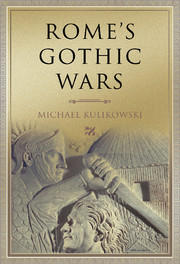
Rome's Gothic Wars
- From the Third Century to Alaric
-
- Published online:
- 05 August 2015
- Print publication:
- 30 October 2006
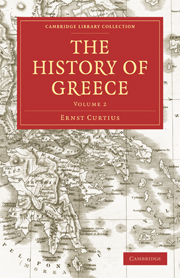
The History of Greece
-
- Published online:
- 05 August 2015
- Print publication:
- 07 July 2011
- First published in:
- 1869
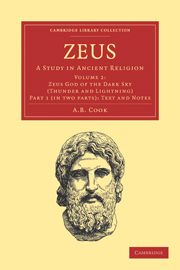
Zeus
- A Study in Ancient Religion
-
- Published online:
- 05 July 2015
- Print publication:
- 21 October 2010
- First published in:
- 1925
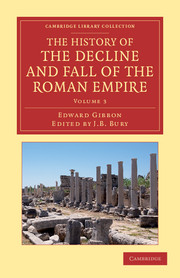
The History of the Decline and Fall of the Roman Empire
- Edited in Seven Volumes with Introduction, Notes, Appendices, and Index
-
- Published online:
- 05 July 2015
- Print publication:
- 14 February 2013
- First published in:
- 1897
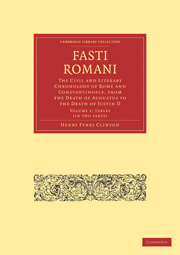
Fasti Romani
- The Civil and Literary Chronology of Rome and Constantinople, from the Death of Augustus to the Death of Justin II
-
- Published online:
- 05 July 2015
- Print publication:
- 31 October 2010
- First published in:
- 1845

Paul's Political Strategy in 1 Corinthians 1–4
- Constitution and Covenant
-
- Published online:
- 05 July 2015
- Print publication:
- 25 June 2015

Observations on the Topography of the Plain of Troy
- And on the Principal Objects within, and around it Described, or Alluded to, in the Iliad
-
- Published online:
- 05 July 2015
- Print publication:
- 25 September 2014
- First published in:
- 1814

Artists and Signatures in Ancient Greece
-
- Published online:
- 05 July 2015
- Print publication:
- 30 June 2015
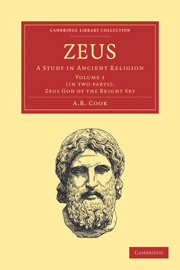
Zeus
- A Study in Ancient Religion
-
- Published online:
- 05 July 2015
- Print publication:
- 21 October 2010
- First published in:
- 1914
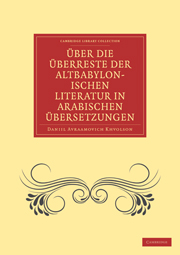
Über die Überreste der Altbabylonischen Literatur in Arabischen Übersetzungen
-
- Published online:
- 05 July 2015
- Print publication:
- 19 May 2011
- First published in:
- 1859

Zeus
- A Study in Ancient Religion
-
- Published online:
- 05 July 2015
- Print publication:
- 21 October 2010
- First published in:
- 1940
Appendices
-
- Book:
- Artists and Signatures in Ancient Greece
- Published online:
- 05 July 2015
- Print publication:
- 30 June 2015, pp 161-162
-
- Chapter
- Export citation
Chapter Ten - Sculpture
- from Part Two - Who Signed What, Where, How?
-
- Book:
- Artists and Signatures in Ancient Greece
- Published online:
- 05 July 2015
- Print publication:
- 30 June 2015, pp 101-144
-
- Chapter
-
- You have access
- HTML
- Export citation
